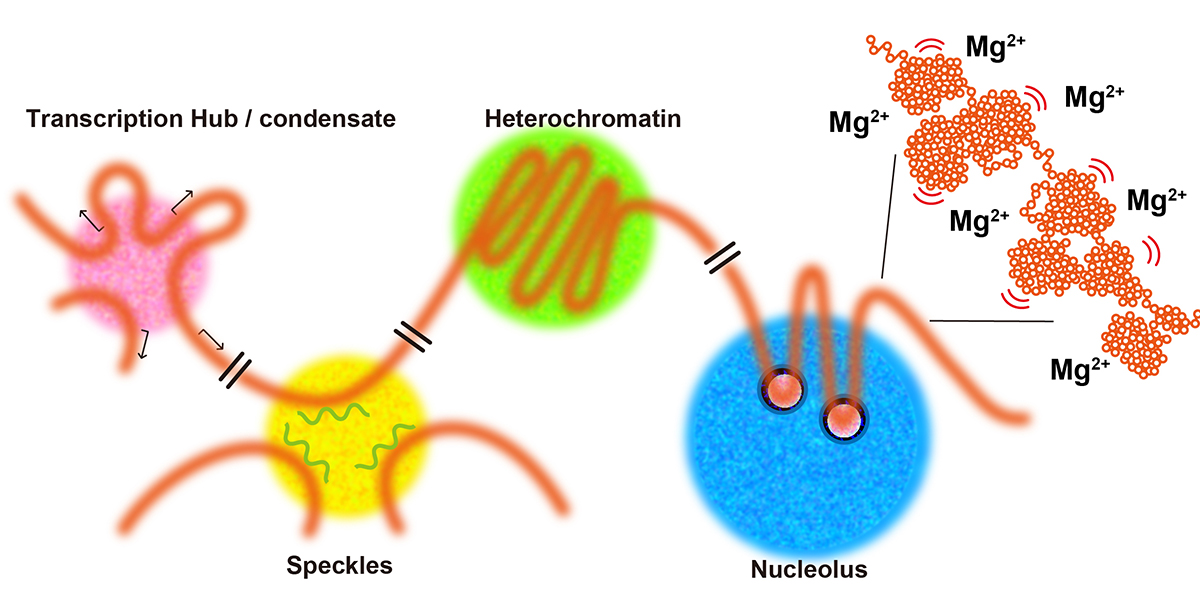The solid and liquid states of chromatin.
Maeshima Group / Genome Dynamics Laboratory
The solid and liquid states of chromatin.
*Jeffrey C. Hansen, *Kazuhiro Maeshima, *Michael J. Hendzel. *Corresponding author
Epigenetics & Chromatin (2021) 14, 50 DOI:10.1186/s13072-021-00424-5
Chromatin in eukaryotic cells is a negatively charged long polymer consisting of DNA, histones, and various associated proteins. With its highly charged and heterogeneous nature, chromatin structure varies greatly depending on various factors (e.g., chemical modifications and protein enrichment) and the surrounding environment (e.g., cations): From a 10-nm fiber, a folded 30-nm fiber, to chromatin condensates/droplets. The organization and material state of chromatin in the nucleus is the subject of active investigation. In this comprehensive review article, Prof. Jeffrey C. Hansen at Colorado State University, Prof. Kazuhiro Maeshima at NIG, and Prof. Michael J. Hendzel at University of Alberta discuss the history, determinants, and mechanism of chromatin phase separation, the phase separation of proteins that are components of heterochromatin and euchromatin, and the emerging concept that chromatin in the nucleus behaves as solid on the mesoscale and a liquid on the nanoscale. The role of chromatin self-interaction in shaping chromatin organization in vitro and in the nucleus is emphasized. This comprehensive review is a featured article by Epigenetics & Chromatin.
This work was supported by KAKENHI grant (20H05936, 21H02453), the Takeda Science Foundation, and the Uehara Memorial Foundation.
















